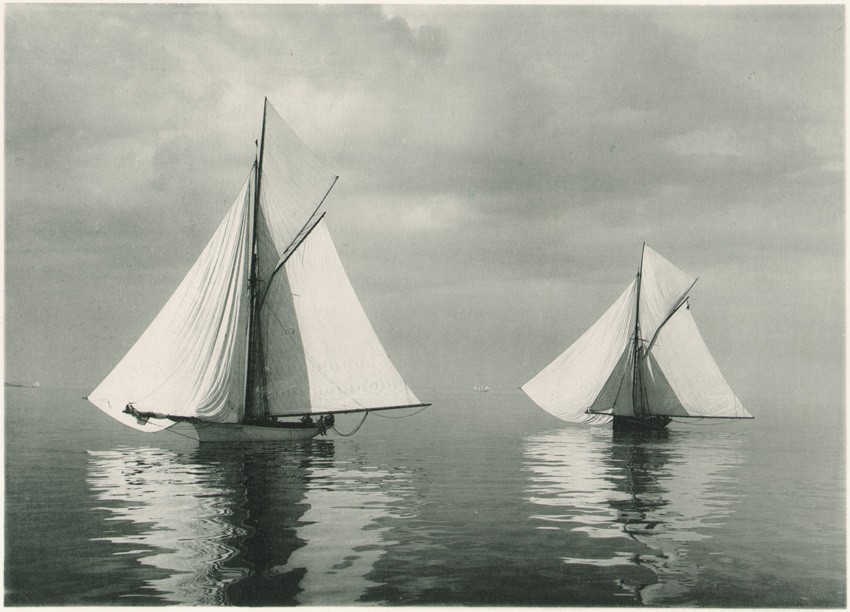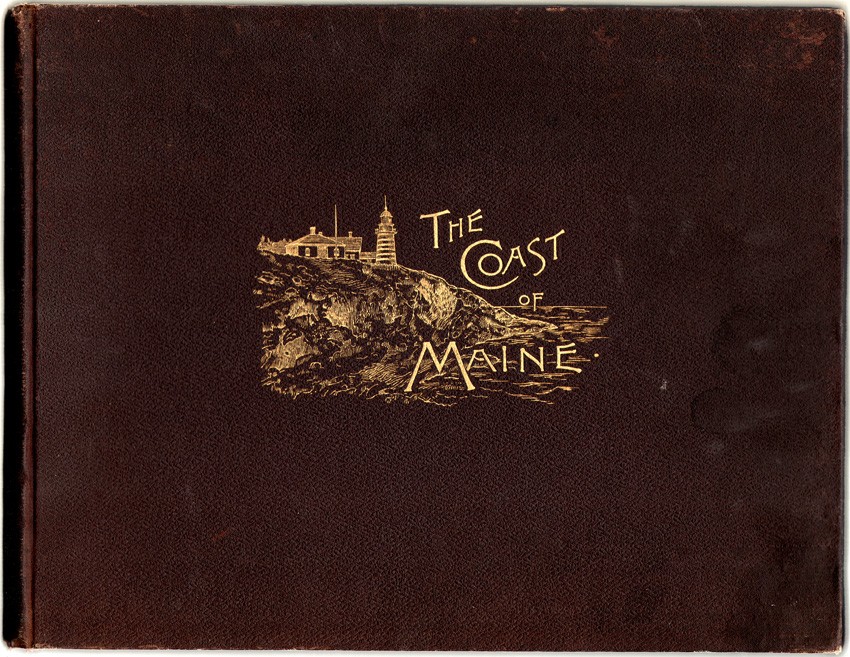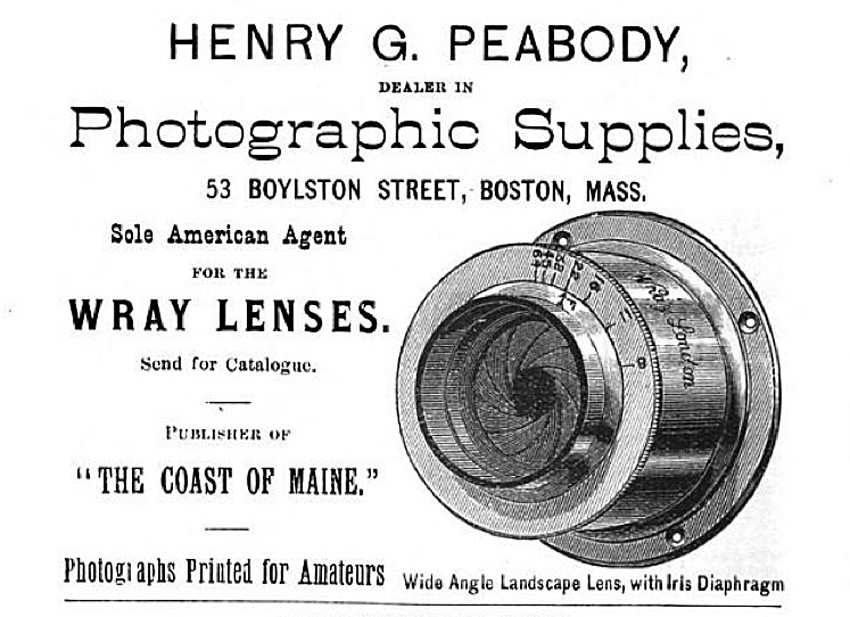When photographer and photographic supply dealer Henry Greenwood Peabody of Boston compiled and self-published the oblong quarto volume The Coast of Maine: Campobello to the Isles of Shoals in 1889, he offered it for sale by subscription, advertising it along with the fact he was the sole American agent for Wray lenses in photographic journals including Anthonys.

“Wing and Wing”, (16.3 x 22.7 cm) one of fifty plates reproduced by the photo-gelatine (collotype) process by the Photogravure Company of New York in the volume: The Coast of Maine: 1889: published by Henry G. Peabody, 53 Boylston Street, Boston.
These lenses were first manufactured in London by a gentleman named William Wray beginning in 1850. Peabody, presumably using a Wray lens or lenses outfitted on his 8 x 10″ view camera, had scoured the rocky Maine coastline the year before in search of the picturesque. The published results in The Coast of Maine included 50 full size plates, done using the very fine photo-gelatine process, (collotype) a specialty of Ernest Edward’s Photogravure Company of New York. These plates, most of which show the coastline in proximity to the ocean; multiple lighthouse views but surprisingly very few boats, (Peabody was an important photographer of sailboats on the high seas) are supplemented with poetry and prose by seven writers, including the American poet and writer Celia Thaxter. (1835-1894)

The artist J.E. Hill is credited as having done the drawings appearing in “The Coast of Maine: Campobello to the Isles of Shoals”, published in 1889 by photographer and at the time, photographic supply house owner Henry Greenwood Peabody of Boston. Hill’s work can be seen here embossed in gilt on the cover of the volume. (27.4 x 35.5 x 2.5 cm) Additional Hill drawings appear as vignettes opposite many of the plates in the book.
Her poem Reverie had been first copyrighted as early as 1878 and published in 1880 in her collection of poems titled Drift-Weed in Boston. Although this long-form poem predates the above photo Wing and Wing by at least ten years, Peabody paired it in double columns opposite this lone sailboat photograph (in full sail) appearing in the work.
Reverie
The white reflection of the sloop’s great sail
Sleeps trembling on the tide;
In scarlet trim her crew lean o’er the rail,
Lounging on either side.
Pale blue and streaked with pearl the waters lie
And glitter in the heat;
The distance gathers purple bloom where sky
And glimmering coast-line meet.
From the cove’s curving rim of sandy gray
The ebbing tide has drained,
Where, mournful, in the dusk of yesterday
The curlew’s voice complained.
Half lost in hot mirage the sails afar
Lie dreaming still and white;
No wave breaks, no wind breathes, the peace to mar:
Summer is at its height.
How many thousand summers thus have shone
Across the ocean waste,
Passing in swift succession, one by one,
By the fierce winter chased!
The gray rocks blushing soft at dawn and eve,
the green leaves at their feet,
The dreaming sails, the crying birds that grieve,
Ever themselves repeat.
And yet how dear and how forever fair
Is nature’s kindly face,
And how forever new and sweet and rare
Each old familiar grace!
What matters it that she will sing and smile
When we are dead and still?
Let us be happy in her beauty while
Our hearts have power to thrill.
Let us rejoice in every moment bright,
Grateful that it is ours;
Bask in her smiles with ever fresh delight,
And gather all her flowers;
For presently we part: what will avail
Her rosy fires of dawn,
Her noontide pomps, to us, who fade and fail,
Our hands from hers withdrawn?
Celia Thaxter.

Advertisement showing wide angle Wray landscape lens with iris diaphragm manufactured in London from: “The International Annual of Anthonys Photographic Bulletin”: New York: 1889: from p. 98 of the advertising section in the rear of the volume. Photographer Henry Peabody is believed to have used a similar Wray lens for photographs appearing in the volume “The Coast of Maine” published by him in 1889.

This is an example of one of several lighthouse plates: “The Nubble : York, ME” (15.6 x 22.5 cm) taken by photographer Henry Peabody and published as a full-page photo-gelatine (collotype) plate in “The Coast of Maine” in 1889. The view shows the Cape Neddick “Nubble” Light near the entrance to the York River. The light continues to operate today.



